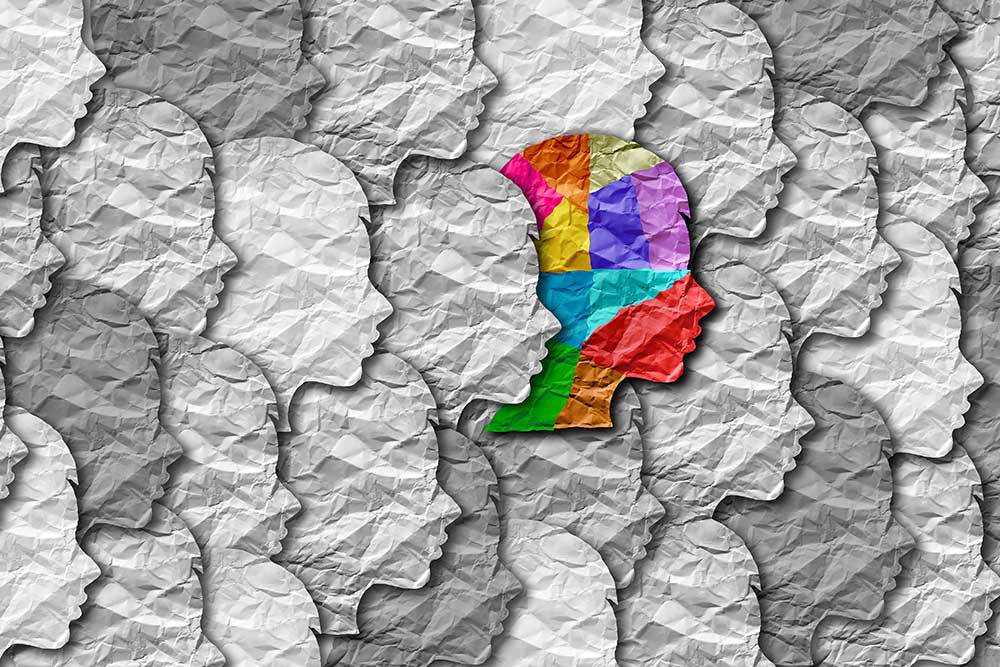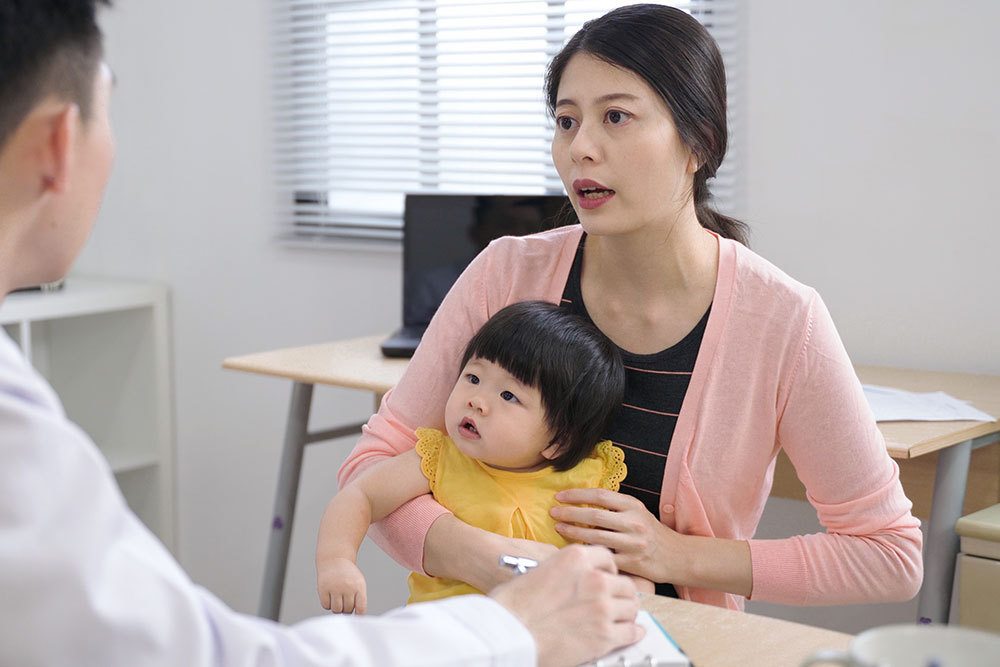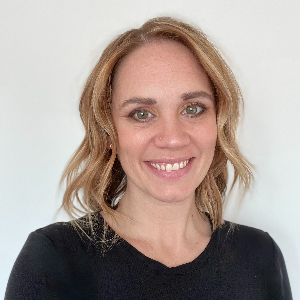Diagnosing Autism Spectrum Disorder in Children

April is Autism Acceptance Month; here's what caregivers should know about ASD diagnosis, treatment, and the importance of taking care of yourself in the process.
Experts: Meleah Ackley, PhD; Sharyn Kerr, PhD, MBA, BCBA-D; Tiffanie Moore; Emily Newton, PsyD, BCBA; Kellie Wicklund, MA, LPC, PMH-C
During a recent therapy session, my counselor said to me, “You know, you don’t have to be polished with me, Ashley. I can sense the tears you’re holding back. It’s OK if you’re not actually ‘fine’ right now.” She was right; I was not “fine”—not at all. And for the first time since I started the long, drawn-out process of getting my daughter diagnosed with Autism Spectrum Disorder (ASD), I gratefully accepted her permission to cry.
Before this appointment, I had been so consumed with making sure my daughter got the support and care she needed that I had stopped taking care of myself. On the outside, I looked like I had it all under control, but the reality is that I was—and often still am—barely hanging on.
“There’s a range of responses [a caregiver of a child with ASD will experience]: Guilt, grief, denial, relief, doubt, fear, anger, frustration, jealousy,” says Kellie Wicklund, MA, LPC, PMH-C, owner and clinical director of Maternal Wellness Center in Hatboro, Pennsylvania. “Like most emotional adaptations that need metabolizing, it isn’t a linear or sequential process.”
I am just shy of a year into my daughter’s diagnosis journey, and to say that I often feel beaten down by it all would be an immense understatement. The road to an ASD diagnosis is long, and it can feel impossible to simultaneously advocate for your child, educate yourself and others, celebrate the wins while mourning the disappointments and setbacks, resist comparison, navigate complicated treatment and support processes, and show up to be a present parent, partner, and employee (plus every other role you fill).
After that therapy session, I felt emotionally raw but also relieved. Even if it was just for an hour, it was really nice to have someone looking out for me. April is Autism Acceptance Month, and I’d like to pay it forward a bit by taking this opportunity to not only raise awareness and advocate for the acceptance of those with ASD but to also offer some compassion and support to the parents and caregivers who continue to show up for their child(ren), no matter how depleted they’re feeling. So, whether you’re curious about the signs of ASD or need comradery and encouragement as you push through the diagnosis process, you’re in good company.
What to Know About Autism
The best place to start with questions about ASD is with your child’s pediatrician, but I know this advice doesn’t help when it’s 11 p.m. and you’re scrolling on your phone, craving immediate answers (and probably reassurance). The problem is that Google will provide you with an overwhelming amount of “answers” to your questions, many of which may not even be accurate. No search engine can offer insight into your specific child because ASD is not a one-size-fits-all condition.
“Autism Spectrum Disorder is a neurodevelopmental disorder,” explains Emily Newton, PsyD, BCBA, clinical director of Springtide Child Development centers in Connecticut, adding, “As a spectrum disorder, each individual’s strengths or challenges will differ. Children may have difficulties with social skills, communication, or flexibility. They may engage in repetitive behavior and play, sensory behavior, or challenging behavior.”
Sharyn Kerr, PhD, MBA, BCBA-D, chief clinical and administrative officer at BlueSprig Pediatrics, a nationwide applied behavior analysis (ABA) center, echoes Dr. Newton, saying, “[ASD] affects people differently and to varying degrees. As such, the signs of autism can look different from child to child, making diagnosis more challenging.”
Still, Dr. Kerr notes there are some generalized symptoms or behaviors that, if your child exhibits them, should be shared with their pediatrician, such as:
- Difficulty interacting or playing with others at an age-appropriate level
- Not using or understanding language in typical ways
- Having little eye contact
- Displaying unusual movements, such as hand flapping (also called stimming)
It’s important to remember that if your child is showing some of these (or any other ASD) signs, that doesn’t necessarily mean they have ASD. Meleah Ackley, PhD, a psychologist at Children’s Hospital & Medical Center in Omaha, Nebraska, says, “There are five categories that must be met to meet diagnostic criteria [for ASD].” These categories include:
- Social communication and interaction deficits
- Restrictive or repetitive behaviors
- Symptoms present in early development
- Symptoms impair daily functioning
- Symptoms are not better explained by other diagnoses
She also notes that clinicians will keep age in mind when looking at symptoms, as some signs of ASD are considered appropriate at certain ages—particularly when looking at how a child plays with toys and interacts with others.
Given how individualized ASD is, fervently Googling the signs and symptoms typically brings more confusion than anything. I couldn’t even begin to estimate how many times I referenced the Centers for Disease Control and Prevention (CDC) milestone index as my daughter developed. Depending on my mood of the day, I could convince myself she was absolutely 100% on the spectrum or that it must have been another diagnosis entirely. I would stay up late into the night going down rabbit holes, only to wake up the next morning exhausted and no more certain where my daughter fell than I had been the night before. Much to my dismay, I always arrived at the same conclusion: I needed an expert to diagnose my daughter, not Dr. Google.

Autism Diagnosis and Treatment
My husband and I suspected something was off with our youngest daughter’s development fairly early. We’d bring up her late milestones at every well-baby check, and by the time she reached 1 year old, we started asking about ASD. I just knew this wasn’t a late-bloomer situation, but pediatricians tend to give kids more time to develop before they really begin to consider the possibility of ASD. I spent the next two years advocating for my daughter, having her evaluated by the state, and researching ASD to the point of exhaustion. Finally, at her 3-year well-check, her pediatrician agreed with our suspicions and referred us to a developmental pediatrician.
“Often, the [ASD diagnosis] process begins with discussing with a pediatrician if a child is meeting developmental expectations,” explains Dr. Ackley. “Then, a referral is made to a specialist, such as a psychologist.” However, Dr. Newton notes, “Referrals or recommendations for diagnosis can also come from early intervention, other therapists, or the school district.”
Tiffanie Moore, senior vice president of clinical services at BlueSprig Pediatrics, says additional specialists a child may be referred to in this situation could be a psychiatrist, neurologist, or a pediatrician specializing in development.
Once your child makes it into the specialist’s office, Dr. Newton says, “You should expect a comprehensive developmental interview, observation, and an autism-specific measure or rating scale such as the Autism Diagnostic Observation Schedule (ADOS), Childhood Autism Rating Scale (CARS), or the Autism Diagnostic Interview-Revised (ADI-R). Additional testing components may include developmental, intellectual, language, daily living skills, behavior, memory, or learning.” When the evaluation phase is complete, you can expect to have another appointment with the specialist to review the results.
If your child is diagnosed with ASD, a variety of treatments may be recommended based on their individual needs and where they fall on the spectrum (level 1, level 2, or level 3). Some treatments our experts shared are:
- Behavioral therapy, which may or may not include applied behavior analysis
- Speech therapy
- Social skills groups
- Occupational therapy
- Physical therapy
- Medication management
- Developmental therapy
For school-age children, there may also be support services offered through the school system.
When considering which methods are right for your child, Dr. Newton recommends caregivers “pursue treatment that doesn’t just target the child’s symptoms, but the child and family as a whole.” She also stresses the importance of ensuring your child’s treatments are evidence-based. “Evidence-based [treatments] ensure caregivers that the treatment has been researched, is safe, and is effective,” she explains.
Being Proactive on a Waitlist
When the pediatrician referred us to a specialist, it felt like a victory—finally, we would get answers. But that celebration was short-lived because we quickly learned that specialists in our area are limited. Our daughter was placed on a 10-month waiting list, meaning she’d be nearly 4 years old before she’d finally be evaluated.
Sadly, our experience isn’t unusual, as the number of providers specializing in development is limited, and with 1 in 36 kids identified as on the spectrum, there’s a serious supply and demand problem across the U.S.
When I found out just how long we’d have to wait to see the specialist, I thought there is no way I could just sit around for another 10 months without getting her help. We know that early intervention offers some of the best outcomes for children with ASD, so I hated the idea of putting off treatment any longer.
If you’ve found yourself in this situation, some things the experts suggest doing to bridge the gap include:
- Ask questions, and do not be intimidated by professionals. Ask the question as many times and in as many ways as necessary to understand the answer.
- Learn about your insurance benefits, what is covered, what isn’t, and what documentation you will need to take advantage of the benefits.
- Call their school district to understand the options for school-based services. Learn more here: Individuals with Disabilities Education Act (IDEA).
- If possible, get on waitlists with multiple diagnosing providers. Explore options and ask providers to call if they have a cancellation—and set reminders to continuously follow up.
- If your child is under 2, consider enrolling in Baby Navigator, which provides ongoing screening along with resources to help parents understand important developmental milestones they can work on at home.
- If your child is under 3, contact your state’s Early Intervention program to learn more about what resources they can provide prior to an official diagnosis.
- Create a file for your child to begin organizing documents you receive, as providers will ask for copies when you seek out services.
- Research the signs and symptoms of autism and make lists of concerns pertaining to those areas. It can help guide the interview with a pediatrician and specialist.
- Seek out a behavioral therapist to help gain strategies to best support a child and answer questions like, “What should I do when my child does XYZ?”.
In the time between my daughter’s referral and her first appointment with the developmental pediatrician, my husband and I got her into private speech therapy and additional support thanks to an individualized education program (IEP) through the public school system. There was still a wait for these services, and speech therapy is expensive without a formal diagnosis, but it was better than nothing.
Coping as a Caregiver
Navigating the complex and drawn-out diagnosis process is incredibly difficult as a caregiver. Personally, I have found it all to be very isolating. There’s only so much venting I can do to my husband since he’s going through the same experience as me, and I don’t have any friends who have had similar experiences. I often feel like an outsider when my friends proudly share their kids’ latest achievements because I’m finally celebrating milestones their children have long since mastered. I’ve also found that most of the time, it’s easiest to keep it all to myself because I don’t want to feel the indescribable pain that comes when a well-meaning friend gives me a look of pity or tries to give me hope by saying something like, “Who knows, maybe she will grow out of it!” (Spoiler: that’s not how ASD works).
“There is real grief around giving up the parenting experience someone expected to have and the dreams and expectations they held for the future,” says Wicklund. “For parents looking at lifetime caregiving, there’s a lot to process about how their life and their children’s life will look very different from what they had planned.”
Since we started this journey with our daughter, I’ve felt every emotion there is to feel. The bone-deep guilt that came after Googling, “Can my child with autism have a normal life?” (it’s a gut-punch to write it again here), the elation I felt the first time she asked, “Mommy, you wanna play?”, the frustration when she scored just two points over the threshold to get services from the state, and the love I am overcome with every time she lets her silly personality shine. And, of course, the exhaustion that comes as a result of all of these highs and lows.
Eventually, it came to a point where I realized that taking care of my daughter requires me to also take care of myself. And while a $10 bath bomb and a good book will definitely provide me with some relaxation, the thing that has been the most beneficial has been talk therapy.
“Caregivers are a child’s best advocate, and that’s a lot of pressure,” says Dr. Ackley, “I highly advise that parents have their own mental health provider, if possible. Therapy can help navigate thoughts and emotions as caregivers traverse through the diagnostic process.”
Wicklund agrees and emphasizes the importance of caring for yourself. “Parents need to put their own physical, emotional, and mental well-being at a priority,” she says, adding, “Parents should understand that it is normal to oscillate in and out of capacity; it is tempting to treat a new diagnosis as a crisis and divert all our energy there, but most often this is a marathon, not a sprint.”
In addition to therapy, the experts also recommend the following:
- Find a support group with other parents who are also going through or who have gone through the ASD diagnosis process with their child(ren).
- Avoid Google (I know, this one is hard) and ask your child’s pediatrician or provider for resources if you want to research.
- Accept that there will be moments of sadness through the process—and that’s OK.
- Choose to do things that bring you pleasure, and when you need a distraction, seek it out (as long as it’s healthy).
Most importantly, if you’ve found yourself on this path as a parent, remember you’re not alone. There will certainly be challenges ahead, but there will also be so many moments of joy, so try your best to soak them up when they arise.
This April marks the first Autism Acceptance Month that I feel a sense of hope. I know that there are many more questions and obstacles to come, but I feel like we’ve accomplished something on my daughter’s journey, and I finally get to take a break from the fight to just enjoy being her mom—for a little while, at least.








